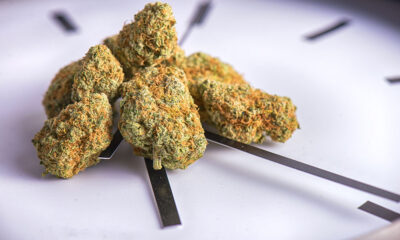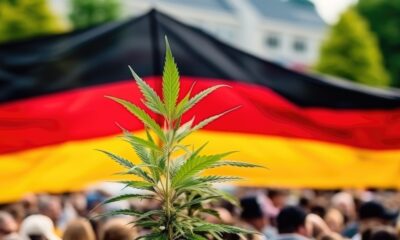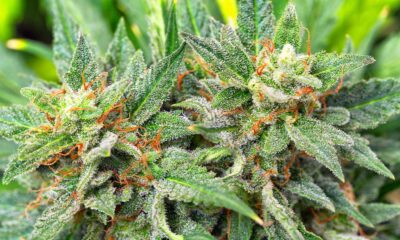
Joint Opinions
The Real 420 Is Dead
With the steady infusion of corporate funding and profit-oriented philosophy into the cannabis industry, cultural institutions like 420 will never be the same.
There was a time not so long ago when 420 was a legitimately secret code — not entirely top secret, but still “secret-ish” in the way that widespread inside jokes could be before the internet effectively revealed most of these half secrets.
But when 420 was still semi-concealed from the mainstream consciousness, even those who knew the secret code mostly had no idea why they were smoking at 20 minutes past 4 o’clock or on that day in mid-April. Few people outside of San Rafael, California had ever heard of “The Waldos,” the true originators of the 420 holiday, so even if a person did have some vague idea about the origins of 420, it was generally wrong.
However, irrespective of their relative knowledge or experience, anybody who loved cannabis and knew about 420 knew that — if nothing else — they could expect to find more kindred spirits puffing at their local park on the 20th day of April. In areas with a stronger concentration of cannabis enthusiasts and a more pronounced culture of activism, these gatherings grew into semi-spontaneous cultural happenings, such as the now-legendary Hippie Hill smoke-out in San Francisco’s Golden Gate Park.
My first 420 in San Francisco was over ten years ago, but I still remember the disorienting thrill of losing and finding myself in the hazy chaos of a massive outdoor smoke-out with the same fuzzy lack of clarity I originally experienced the day after. This was long before California legalized cannabis for adult-use, or the wave of cannabis legalization had started sweeping the country.
Today, 420 in San Francisco is different than it was over a decade ago. It’s now similar to the city’s popular music festival Outside Lands, only with slightly more weed. It’s true that you can’t nail a sunbeam to the ceiling; some cultural phenomena are stitched from the ephemeral fabric of a moment in time and are never destined to last.
Today, 420 still exists, and as before, it serves as symbol of the zeitgeist in cannabis culture — a culture that’s rapidly being injected with corporate funding and a profit-oriented philosophy.
Case in point: This year’s 420 gathering on Hippie Hill has a corporate sponsor: the marijuana delivery company, GreenRush.
The corporatization and homogenization of 420 today is an expression of a much broader existential crisis facing those steeped in the outlaw culture that once permeated the world of cannabis: When cannabis is outlawed, only outlaws cultivate cannabis, but when cannabis becomes a legal commodity, we witness developments such as the once-prohibitionist former Republican Speaker of the House John Boehner entering the cannabis industry.
Is Boehner’s “change of heart” on cannabis self-serving cash grab by someone who spent their career battling safe access to cannabis so aggressively they received a “zero percent” rating from NORML? Most likely. We can quibble about whether or not city permits and corporate sponsors are a step forward or backwards for 420, but bottom line, once a politician like Boehner shows up, the 420 party is officially over.
When did 420 lose its underground edge? That all depends on your perspective. What’s certain is that, just as the industry is evolving into something that many of us don’t recognize, so is the “holiday” that used to define the spirit of cannabis. Now it’s amateur hour — like New Year’s Eve, when all the people who don’t usually consume alcohol decide to binge drink, which makes the barflies miserable but the bar owners very happy.
Is 710 the New 420?
You’ve probably heard the number 710 used in relation to cannabis concentrates like shatter and sauce: If you didn’t already get the memo, the numbers appear to spell out the word “OIL” when read upside down, referring to the less-common catchall term “hash oil” to refer to cannabis extracts. It’s certainly intended as a counterpart to 420, and there are some fun events associated with 710, but it’ll never be quite the same as 420.
There’s nothing secret about 710 — and this is because nowadays nothing is really secret the way 420 was decades ago. That said, even within the cannabis community, there is some controversy surrounding the practice of dabbing. Few cannabis enthusiasts will deny the potent effects of cannabis concentrates, but some consider the prevailing methods for dabbing (which often involve blow torches) to be an optics nightmare for the emerging legal industry. This view has many adherents, but it doesn’t seem to have impacted the massive popularity of dabbing; if anything, maybe — just maybe — the relative stigma surrounding dabbing is one of the forces driving that popularity.
Because John Bohener might be down to cash in on the green rush, but he’s probably not taking a dab anytime soon. So, in some ways the culture that’s grown around dabbing and the sesh scene is the last outpost of outlaw culture in the rapidly expanding and “maturing” cannabis industry. Depending on where your operation is located, extraction can be a relatively risky undertaking, and risk is rewarding — financially and emotionally for the right kind of person.
What it really boils down to is those of us who come from the old world of cannabis coming to grips with the fact that weed is officially about as cool as orange juice futures. And that sort of stings, which is why some of us are embracing the mild subversive thrill of 710 — because it’s fun to do bad things.
TELL US, do you think the real 420 is dead?

























